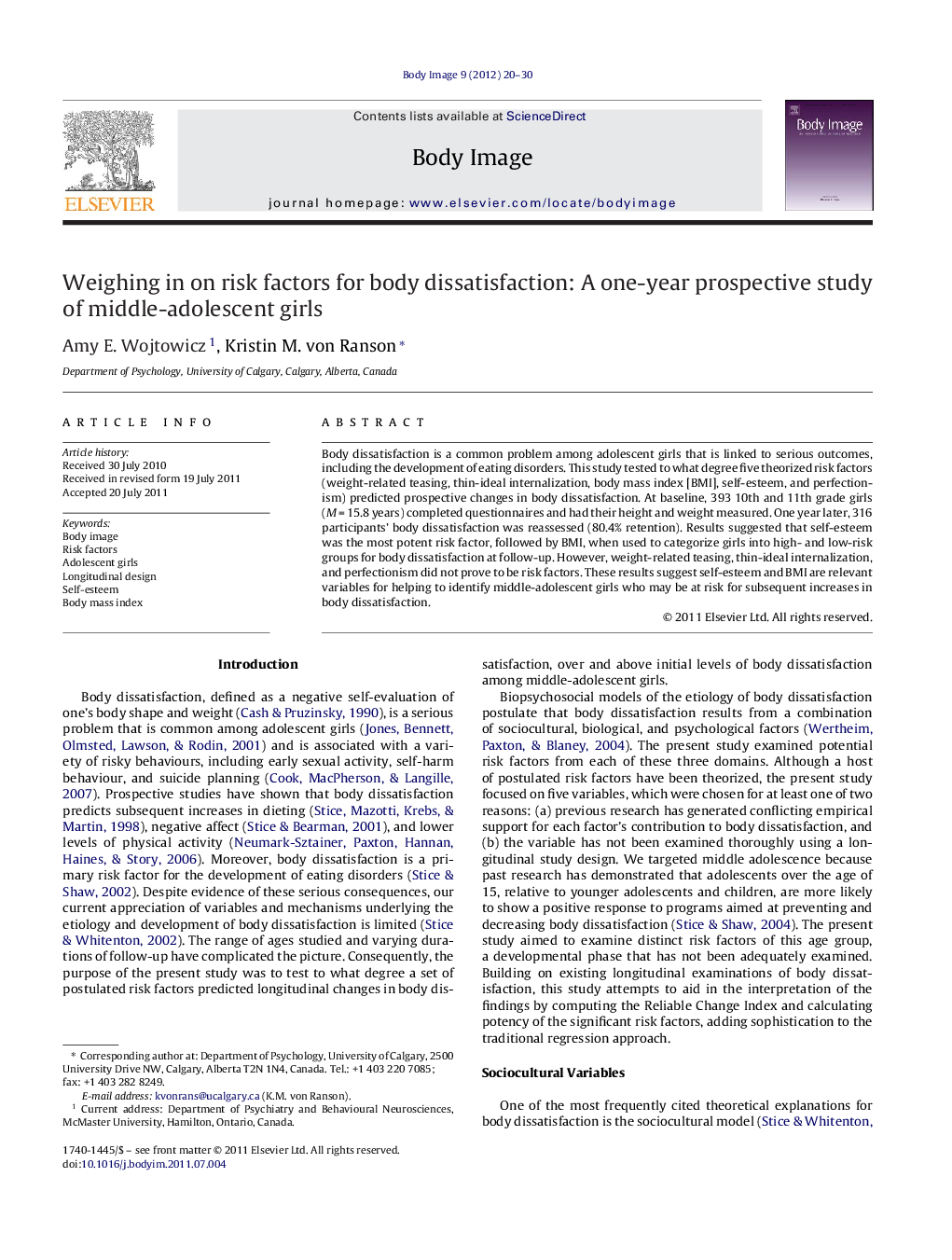| Article ID | Journal | Published Year | Pages | File Type |
|---|---|---|---|---|
| 903195 | Body Image | 2012 | 11 Pages |
Body dissatisfaction is a common problem among adolescent girls that is linked to serious outcomes, including the development of eating disorders. This study tested to what degree five theorized risk factors (weight-related teasing, thin-ideal internalization, body mass index [BMI], self-esteem, and perfectionism) predicted prospective changes in body dissatisfaction. At baseline, 393 10th and 11th grade girls (M = 15.8 years) completed questionnaires and had their height and weight measured. One year later, 316 participants’ body dissatisfaction was reassessed (80.4% retention). Results suggested that self-esteem was the most potent risk factor, followed by BMI, when used to categorize girls into high- and low-risk groups for body dissatisfaction at follow-up. However, weight-related teasing, thin-ideal internalization, and perfectionism did not prove to be risk factors. These results suggest self-esteem and BMI are relevant variables for helping to identify middle-adolescent girls who may be at risk for subsequent increases in body dissatisfaction.
► We tested risk factors (weight-related teasing, thin-ideal internalization, body mass index [BMI], self-esteem, perfectionism) for changes in body dissatisfaction. ► 10th and 11th grade girls were assessed at baseline and one year later. ► Lower self-esteem and higher BMI were associated with risk for increased body dissatisfaction over time. ► Weight-related teasing, thin-ideal internalization, and perfectionism did not emerge as risk factors for subsequent increases in body dissatisfaction. ► Self-esteem and BMI may help identify middle-adolescent girls who may be at risk for increased body dissatisfaction.
